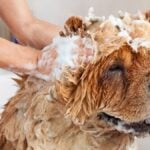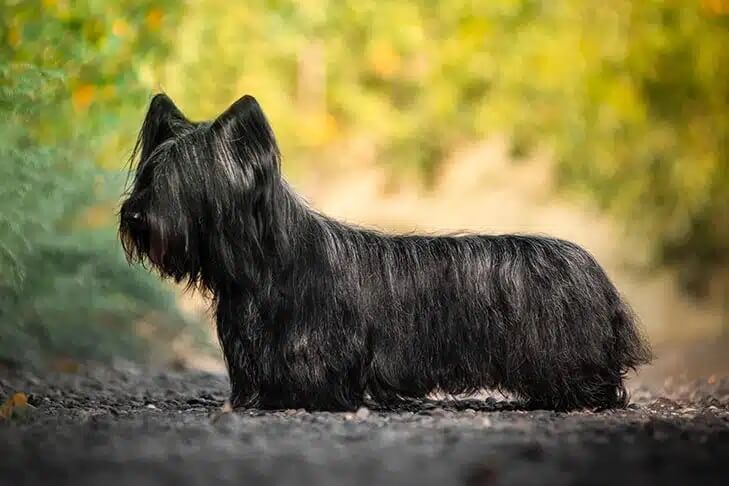
Home » Judging the Skye Terrier

Over the past several years, the Skye Terrier Club of America (STCA) Board of Directors has been working toward the final development of an Illustrated Breed Standard. A new, breed amplification has already been developed and approved and the necessary drawings are well underway. It is our strong desire to finally complete this project in time to introduce it at a Special Judges Education Seminar we plan to host in conjunction with our Diamond Jubilee Show (100th National Specialty and 75th year as an AKC Member Club) over the Montgomery County Kennel Club weekend in October 2013.
Given the wonderful opportunity provided us by Showsight Magazine to highlight our breed in this issue, I have developed this article on judging the Skye Terrier, with the input of the STCA Board, to include some of the key elements of our new, Board approved Breed Standard Amplification. Additionally, I have included comments taken from an article prepared by the pre-eminent Skye Terrier Breeder Judge of more than 50 years experience, Mr. Walter F. Goodman. This article, which focuses primarily on breed proportion and balance, is one provided to attendees at Judges Education Seminars because these are key elements that speak to the essence of Skye judging. It is our sincere hope that those who read this article will find the material of use.
The official breed standard for the Skye Terrier describes the general appearance of the breed as follows:
“The Skye Terrier is a dog of style, elegance and dignity, agile and strong with sturdy bone and hard muscle. Long, low and level—he is twice as long as he is high—he is covered with a profuse coat that falls straight down either side of the body over oval-shaped ribs. The hair well feathered on the head veils forehead and eyes to serve as protection from brush and briar as well as amid serious encounters with other animals. He stands with head high and long tail hanging and moves with a seemingly effortless gait. He is strong in body, quarter and jaw.”
It is this critical paragraph that describes breed type. According to Mr. Goodman: “Type is breed character. It is the combination of distinguishing features, which add up and make the
individuality of a breed.” Skye Terriers are long and low and their breed type can be abused by fanciers. Type should not be a matter of personal preference, but an adherence to desired breed characteristics as stated in the Standard. There are variations in size or bone, but substantially, type should remain constant. Those Skyes that adhere closely to the written word are obviously nearer to correct type.”

Mr. Goodman then goes on to describe balance, style and soundness as follows:
“Balance, perhaps, is easier to understand, since there are clear dimensions involved. A correct Skye is well proportioned—length of head to length of neck, to length of back and tail and height. A Skye with correct proportions can look short-backed. A Skye who may be lower with a shorter neck and head, but the same length of back as the latter dog is unbalanced. Skyes can be too long as well as too short. Usually a properly proportioned dog stands out because of correct balance. Style becomes the next ingredient. It comes from that proper balance combined with showmanship and personality. A dog of lesser quality but with showmanship tends to conceal many of his faults.
Soundness is more difficult to describe. In dog show parlance, soundness refers to proper action or movement. The standard is quite specific as to shoulder placement and front assembly as well as the rear quarters. It tells us what to expect as the dog moves towards you or away from you or as you view it in profile. To me, a proper moving Skye is not only sound but typey. In other words, a correct Skye is a sound Skye. Skyes should drive from behind. If the front seems unable to keep up, it means that the front assembly is not completely correct. Often the questionable movement of the topline is the give-away of labored action. Equally unpleasant is a lack of drive from the quarters. This is every bit as unsound and not typey.”
Reach and drive should be well balanced with the gait easy, fluid, light, effortless and almost floating.
In summation, the “Essence of the Skye Terrier” is that the ideal dog must be both sound and a possessor of correct breed type. Essentials require that movement must be fluid and effortless and that the Skye carry a strong, level topline. Anything less is typically an indicator of poor front/rear construction and/or poor condition.
Skyes must also possess both good substance and elegance, be well balanced in their height to length ratio, and carry a double coat including a hard, lank topcoat. In judging the Skye, any dog lacking these notable requirements, listed as follows, should be seriously penalized.